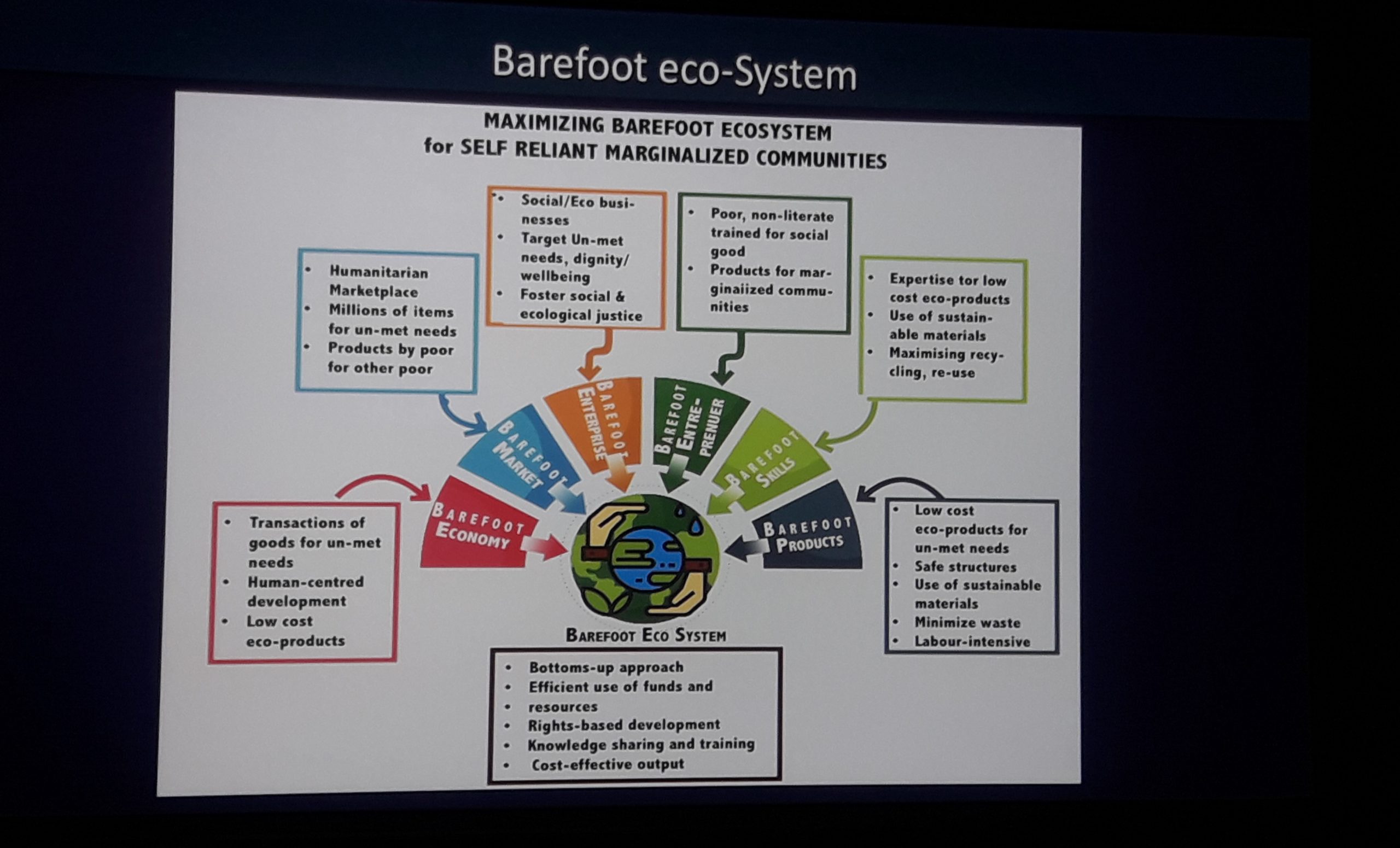-
Culture in Crisis (Weekly blog, 23 February 2020)
Posted on February 23, 2020A blog by Catherine Leonard, Secretary-General
Culture in Crisis
This week Alex and I attended ‘Culture in Crisis: Building Futures: Preserving Heritage Through Community Engagement’ at the V&A.
The V&A’s Culture in Crisis programme is dedicated to protecting the world’s cultural heritage and supporting communities that suffer cultural loss, whether through criminal acts or natural disaster. We have been collaborating with them over the Singapore Conference, now postponed.
The highlight of the evening was a keynote by celebrated Pakistani architect and co-founder of the Heritage Foundation of Pakistan, Yasmeen Lari. We had hoped to be part of a recent conference with the Foundation and INTBAU Pakistan. But sadly, Alex was unable to go at the last minute because of visa complications. And so, it was wonderful to meet Yasmeen and hear more about her work in person. Particularly what the Foundation is doing to support community-based strategies for preserving cultural heritage.
But Yasmeen was not the only speaker on the programme, and it was really interesting to hear the other panel members.
 Environmental sustainability comes from cultural values
Environmental sustainability comes from cultural valuesFirst of all Dr Aylin Orbasli from Oxford Brookes University spoke about the work of student teams in remote areas of the Middle East. She made a very good case for linking environmental sustainability with cultural values. I particularly liked her four tips:
- Small budgets over time are often more effective
- Social fabric is part of place
- Places have an established social dynamic
- Enabling, invigorating and supporting local interest
Manchester’s Taj Mahal
Then Elaine Griffiths MBE, Chief Executive of the Monastery of St Francis & Gorton Trust, told the story of how they saved and restored the building. She spoke warmly about how the project was as much, if not more, about rebuilding the community. It’s inclusion on the World Monuments Fund’s Watch List in 1999. As this has previously included Macchu Picchu, the Taj Mahal and the Valley of the Kings, the monastery gained the nickname ‘Manchester’s Taj Mahal’. I especially liked the idea of the site as a modern-day monastery and catalyst for positive change. Free admission for local residents and lots of community events!
Heritage and marginalised communities
Finally Yasmeen Lari presented her work with beggar communities near the World Heritage Site of Makli. The Foundation is training them in various skills. Particularly making traditional blue kashi tiles, which the region of Sindh is famous for.
And as a result of this training, the former marginalised mendicants are now earning money. Yasmeen explained that this was all part of her ‘Barefoot Ecosytem’ for creating self-reliant marginalised communities. Furthermore, she stressed that they are selling their products to each other and not just rich people.

One example of a ‘Barefoot Enterprise’ is Yasmeen’s design for an earthen, fuel-efficient chulah (stove). It won a World Habitat award in 2018. They only cost £6 each and have an important role to play in safeguarding women’s dignity, health and income. She has also designed disaster-resistant platforms for water pumps as well as eco-toilets. They use earth, lime and bamboo. These are all carbon neutral materials and easy and familiar for local communities to work with.
Yasmeen’s work for social good that doesn’t hurt the planet was truly an inspiration to us all!
Relevance to INTO
The evening’s discussion made me think of several INTO members’ work. I thought of Union REMPART and their focus on participatory, collective and civic action. But also their training ethos and the idea that you don’t need to be an expert to participate. (You can read an earlier blog about REMPART here.)
I also thought of the Indian Trust for Rural Heritage and Development. The ITRHD empowers rural communities towards the sustainable development and management of their cultural assets. By conserving and nurturing rural heritage, it ensures residents’ livelihoods and increases the pride and self-confidence of the entire community.
This was something that Yasmeen also highlighted: How the Foundation’s work was enabling the surrounding communities to have a stake and take pride in the World Heritage Site.
Which made me in turn think of the Petra National Trust and their cultural education and awareness programme, which:
- Builds awareness of the value of culture and heritage to the daily lives of local communities
- Instills pride among youth in their heritage
- Encourages creativity, critical thinking and entrepreneurship among our young participants
- Builds a new generation of cultural leaders among local communities who identify with their heritage, are civically engaged and active in their own responsible and sustainable development
I could go on … as I often find myself saying, we all have something to learn and something to share! We hope to work with the Heritage Foundation of Pakistan in the future.

 44 (0)20 7824 7157
44 (0)20 7824 7157